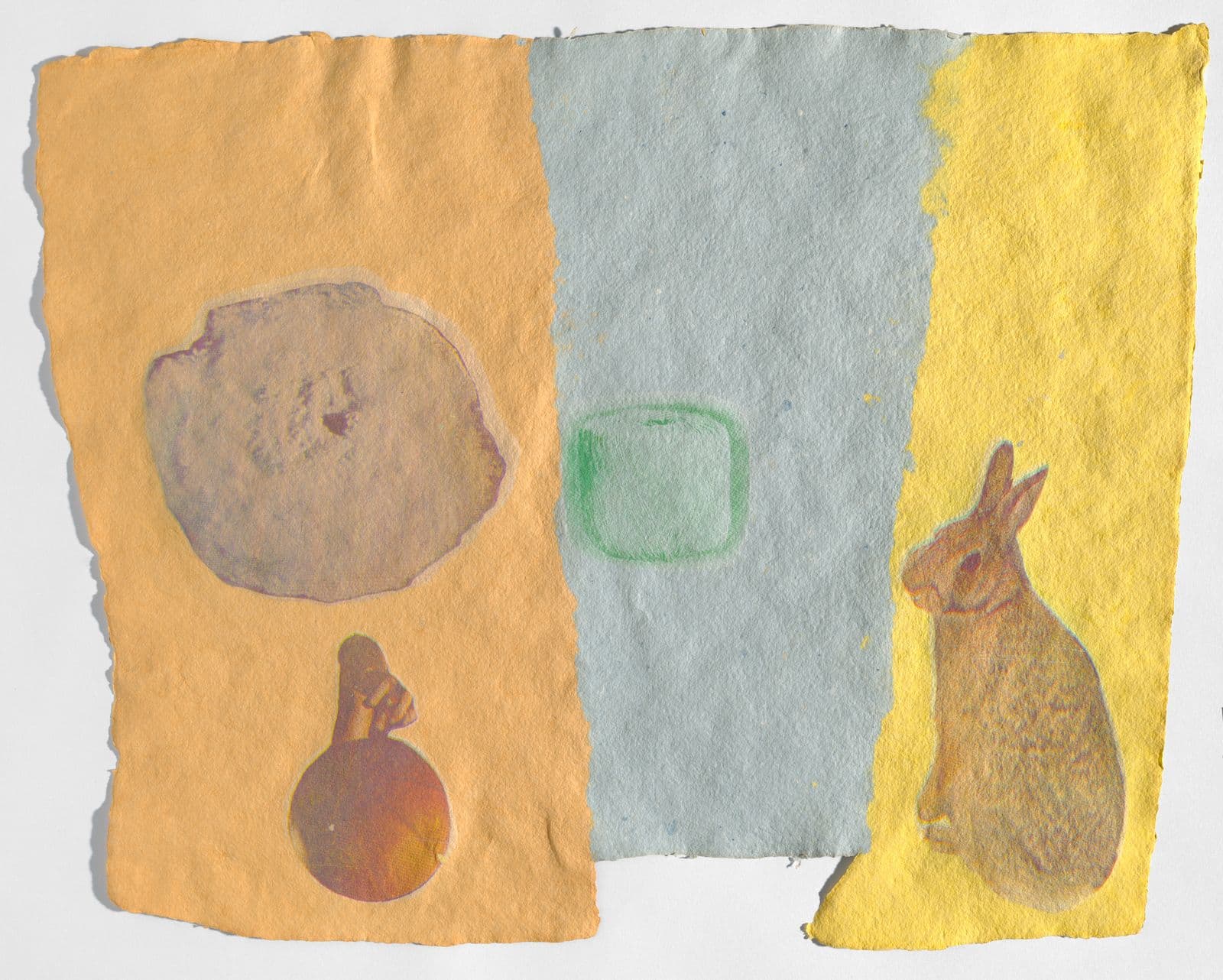Paper: the next frontier

Robert Rauschenberg, Gemini G.E.L., Roan; from Pages and fuses, 1974, pressed paper pulp with screenprinted tissue embedded, 48.1 h cm, 62 w cm, National Gallery of Australia, Kamberri/Canberra, Purchased 1975. © Robert Rauschenberg. VAGA/Copyright Agency.
The importance of papermaking in KENNETH TYLER'S workshops and the innovative ways in which handmade papers were used.
Upon opening his own workshop in 1965, Kenneth Tyler began a long and involved investigation into handmade paper. The American ‘print renaissance’ of the 1960s – which saw graphics increase in both complexity and size – necessitated a more diverse range of paper that could accommodate the needs of the new generation of prints. True to his reputation as an innovator, Tyler played a key role in researching and developing new papers and creative ways of using them.
It became clear to Tyler that if prints were going to gain recognition as significant contemporary works, they needed to be produced on a scale to rival that of painting. Robert Rauschenberg’s Booster 1967 added urgency to Tyler’s ‘paper chase’, requiring sheets of sufficient size to print a life-size X-ray image of the artist. Tyler initially looked to American industry for the solution, but when this proved fruitless (due to poor commercial return), he cast his eye further afield towards European paper mills. It was at Arjomari Prioux, a fine art paper manufacturer in Epinal, France that Tyler discovered continuous rolls of mouldmade paper which could be cut to size. The prohibitive costs of importing such products made this a short-term solution only, and prompted Tyler to forge connections with paper makers closer to home – such as John Koller of HMP – before setting up his own facilities.

Robert Rauschenberg, Gemini G.E.L., Kenneth Tyler, Booster from Booster and 7 studies, 1967, National Gallery of Australia, Kamberri/Canberra, purchased 1973 © Robert Rauschenberg. VAGA/Copyright Agency, 2023
A particularly significant milestone in Tyler’s handmade paper journey occurred in August 1973. Inspired by his previous visits to France, Tyler decided to hire a paper mill and take an artist with him to embark on his first major foray into papermaking. Who better to collaborate with Tyler on this project than Rauschenberg, who ‘could invent on the spot, had a lot of ideas and loved the challenge’?1 Furthermore, as a darling of the American art scene, Rauschenberg had the necessary clout to fuel publicity around the project.
And so, Rauschenberg, Tyler and a small team from Gemini GEL visited the 14th century Richard de Bas paper mill, nestled in the picturesque countryside of southern France, with the aim of producing a body of work over the course of four days. Rauschenberg brought two key ideas with him, to ‘allow the form to become the print’ and to ‘paint in paper’2. The resultant Pages and Fuses series of works are highly experimental investigations into the possibilities of paper pulp. Composed of natural fibres, the Pages were created by pouring pulp directly onto the mesh in a free-flowing form, or by using shaped moulds that had been made by a tinsmith to Rauschenberg’s specifications. The artist then embedded rags and string in the wet pulp to add further texture.

Robert Rauschenberg, Link 1974, from Pages and fuses series, pressed paper pulp with screenprinted tissue embedded, 60 x 49 cm(irregular), published by Gemini Graphic Editions Limited, Los Angeles. National Gallery of Australia, Kamberri/Canberra, purchased1975. © Robert Rauschenberg / Copyright Agency, 2022
The success of the Richard de Bas project triggered a renewed interest in handmade paper across America, in what has been dubbed ‘the paper revolution’3 of the 1970s. A crucial shift was occurring in the way that paper was perceived by the artistic community: it would no longer be limited to its traditional supporting role, but rather was embraced as an independent medium.
A lovely photo album full of candid shots documenting Tyler and Rauschenberg’s time in France was put together by fellow collaborator and master papermaker Marius Peraudeau. Here are a few pages for you!

Robert Rauschenberg laying screenprinted tissue paper onto newly formed wet colour pulp for 'Link', from the 'Pages and fuses' series, Richard de Bas Paper Mill, Ambert, France, August 1973

Kenneth Tyler and Robert Rauschenberg outside the Richard de Bas Paper Mill during the 'Pages and fuses' project, Ambert, France, August 1973

Papermakers operating the 14th century screw press in the press room at the Richard de Bas Paper Mill, during Robert Rauschenberg's 'Pages and fuses' project, Ambert, France, August 1973

Kenneth Tyler, Robert Rauschenberg, Elie d'Humeriers and Patrice Peraudea outside the Richard de Bas Paper Mill during the 'Pages and fuses' project, Ambert, France, August 1973
Rauschenberg & Johns: Significant others is on display at the National Gallery from 11 June – 30 October 2022.
Rauschenberg & Johns: Significant Others is a National Gallery Touring Exhibition supported by Visions of Australia. The National Gallery gratefully acknowledges the generous support of the Tyler Charitable Foundation in presenting the exhibition and supporting the digital publication.
- Quoted in Pat Gilmour, Ken Tyler: Master Printer and the American Print Renaissance, Canberra: Australian National Gallery, 1986, p.87.
- Quoted in Pat Gilmour and Anne Willsford, Paperwork, Canberra: Australian National Gallery, 1982, p.49.
- Pat Gilmour, Ken Tyler: Master Printer and the American Print Renaissance, Canberra: Australian National Gallery, 1986, p.88.

